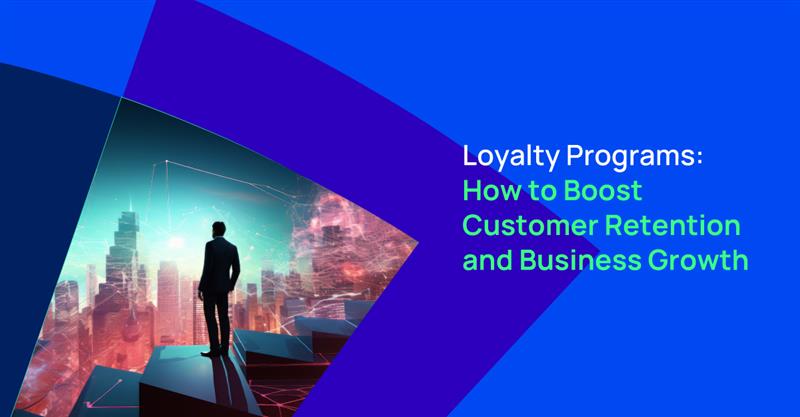What is a Loyalty Program?
A loyalty program is a customer engagement strategy designed to reward and retain customers on the basis of their engagement with a brand.
They have incorporated elements from both the traditional and the digital, providing an integrated experience across multiple touchpoints for the customer.
Loyalty programs enable businesses to cultivate deeper, long-lasting relationships with their customers. They are the next generation of your old rewards system.
This combination approach offers flexibility for the customer end and valuable data insights for the business end
Key Benefits of the Loyalty Program
A well-thought-out loyalty program offers several key benefits:
- Consistent customer experiences across all platforms, so no matter where you interact, it feels the same.
- Various options for redeeming rewards, making it easy to choose what suits you best.
- Real-time tracking and updates, letting you see everything as it happens.
- Personalized communication with customers, ensuring messages are tailored to each person.
- Actionable insights into customer behavior, providing valuable information to understand needs and preferences.
- Efficient management of the program, simplifying the overall process.
The true value of a loyalty program extends beyond just collecting points and rewards. These programs help create strong emotional connections by offering personalized experiences.
At the same time, they deliver measurable business outcomes through deep, data-driven insights. This means businesses can see real, beneficial results, all while making customers feel special and understood.
What is a Channel Partner Incentive Program?
A channel partner incentive program is a setup to reward partners when they reach certain goals. These goals can be selling a specific amount, promoting products, or doing other important business tasks. In these programs, there are often financial rewards.
These might include discounts, rebates, or commissions. Besides money, there are also other kinds of rewards. These can be things like getting recognized for their work, having chances to learn new skills, or getting to see new products before others do.
Who are Channel Partners?
Channel partners are third-party entities that help sell their products or services to customers.
These partners are important because they connect the business with customers and often offer specialized services or expertise that the company alone might not have. They also help in areas where the company might not have a strong presence.
Some examples of these partners are resellers, who sell products directly to customers, and distributors, who buy products in bulk to sell to smaller stores or businesses.
Consultants offer advice and expertise, while system integrators combine different technology products to work as a complete system. Value-added resellers take products or services and add features or services to create a new solution for customers.
How To Choose The Right Channel Partners?
The success of your channel incentive program largely depends on choosing the right partners. When evaluating potential partners, here are some key factors to consider:
Industry Knowledge:
Partners who have deep knowledge of your target industry can help you expand into new regions or industries more effectively. Their insights into local trends and customer needs can be a huge asset in refining your strategy.
Character and Reliability:
A partner with a solid character and reputation can enhance customer trust in your brand. It's also important to consider their reliability—can they consistently deliver results and meet expectations?
Mission Alignment:
For a partnership to be effective, your business mission must align. If your partner's objectives don't match yours, it can lead to conflicts and undermine the overall success of the relationship.
Tech Savvy Professional:
Partners with strong technical skills can add significant value. Whether it's through product support, customization, or integration services, their ability to understand and support your offerings can make a real difference.
Growth-Focused Approach:
Look for partners who are committed to long-term success. A willingness to invest in training, marketing, and sales efforts shows they are dedicated to growing alongside you and can drive future success.
Why Do You Need a Channel Incentive Program?
A well-designed channel incentive program is key to boosting partner engagement and performance. By offering targeted rewards, you motivate partners to prioritize your products, increasing sales and market share.
These programs create a competitive environment, encouraging partners to align with your business goals, from hitting sales targets to expanding into new markets.
Additionally, they strengthen relationships by making partners feel valued, fostering loyalty and advocacy. This mutual support drives long-term success and profitability for both your business and your partners.
Measuring effectiveness with KPIs
Sales Performance:
Track sales performance by monitoring revenue growth and market share to gauge the impact of the loyalty program on driving sales.
Customer Satisfaction:
Collect customer feedback to gauge satisfaction and understand how the loyalty program impacts their experience.
Market Expansion:
Assess how well partners are entering new markets and gaining customers, as a strong loyalty program should boost brand expansion.
Incentive Program ROI:
Calculate ROI by comparing the cost of incentives to the revenue generated from loyal partners to assess program effectiveness.
Channel Engagement:
Track partner participation in training and activities; high engagement indicates a strong loyalty program.
Retention Rates:
Monitor partner retention; high rates indicate the loyalty program is effectively fostering long-term relationships.
By regularly monitoring these KPIs, organizations can get a clear picture of how well their channel loyalty programs are performing and where improvements may be needed.
Types of Loyalty Programs for Businesses
There are several types of loyalty programs, each designed to suit different business goals and customer needs. Here are some of the most common:
Point-Based Loyalty Programs
This is one of the simplest and most popular types of loyalty programs. Customers earn points with each purchase, which can then be redeemed for rewards. Benefits include:
- Easy to understand
- Encourages repeat purchases
- Increases customer engagement
Tiered Loyalty Programs
These programs offer escalating rewards based on customer activity or purchase volume. As customers reach higher tiers, they unlock more valuable rewards. Benefits include:
- Encourages long-term loyalty
- Customizable rewards based on customer behavior
Referral Programs
Referral programs incentivize customers to refer new customers to your brand in exchange for rewards. This type of program leverages word-of-mouth marketing, expanding your customer base while rewarding loyal customers. Benefits include:
- Expands brand visibility through customer networks
- Generates new leads
Subscription-Based Loyalty Programs
In subscription programs, customers pay for exclusive benefits such as discounts, special access to events, or early access to new products. Benefits include:
- Boosts customer engagement
- Encourages long-term loyalty
Choosing the Right Program for Your Business
Each type of loyalty program offers different advantages. When selecting the best fit for your business, consider the following:
User Demographics:
Understand your target audience's preferences and behaviors. What types of rewards would they find most valuable?
Brand Objectives:
Your program should align with your broader business goals, whether that’s driving repeat purchases, increasing brand visibility, or generating new leads.
Budget and Resources:
Consider the costs associated with running the program. A well-funded program can provide more attractive rewards, but smaller budgets can still be effective with the right incentives.
By tailoring your loyalty program management software to your customers' needs and aligning it with your business goals, you can maximize engagement and drive long-term success.



